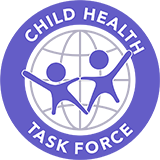Given the centrality of essential commodities and supplies for optimal newborn and child health outcomes, and the realization that the availability and quality of child health commodities in many countries is suboptimal, a subgroup on newborn and child health commodities was created in 2019. The Child Health Task Force Newborn and Child Health Commodities subgroup will afford the opportunity to continue to raise awareness and promote collective efforts to improve the way commodities for newborn and child health are prioritized, financed and managed.
While the work of the subgroup intends to be comprehensive and reflect the global focus on 'survive, thrive and transform' for children 0-18 years of age, given the large scope of this age group and the multiple commodities/equipment needed, a process of sequencing will be employed to focus action. The subgroup will initially focus on the commodities for the “survive” aspect and on children from 0-5 years. While the initial focus of the subgroup is limited in scope, efforts will help build the foundation for expansion to incorporate the thrive and transform approaches as a broader child health package is conceptualized globally.
Goal
To improve availability, accessibility, affordability, and safe use of quality child and newborn commodities that are required to support high impact health interventions.
Objectives
- Optimize coordination within global and national supply chain strategies for an integrated child health package.
- Articulate a basic equipment package for newborn and child health in the broader global and national supply chain strategies.
- Increase end user engagement to support the availability, affordability and appropriate use of quality newborn and child health commodities.
- Develop evidence-based strategies to improve newborn and child health commodities across the humanitarian/development continuum/nexus (eg preparedness, transitions to stable supply chains post crisis/shock).
- Shape opportunities for private sector collaboration for newborn and child commodities.
- Share resources on recognized and emerging best practices and innovations as well as practical experiences from implementation in country programs for management of child and newborn health commodities.
- Support improved maturity of both upstream (procurement and market shaping) and downstream (delivery and last mile) components of the supply chain.
- Support country programs to assess the quality of use aspects (eg appropriate prescription practices, rational medicine use and user adherence).
Leadership
Chairs:
- Joseph Monehin, USAID
- Francisco Blanco, UNICEF
